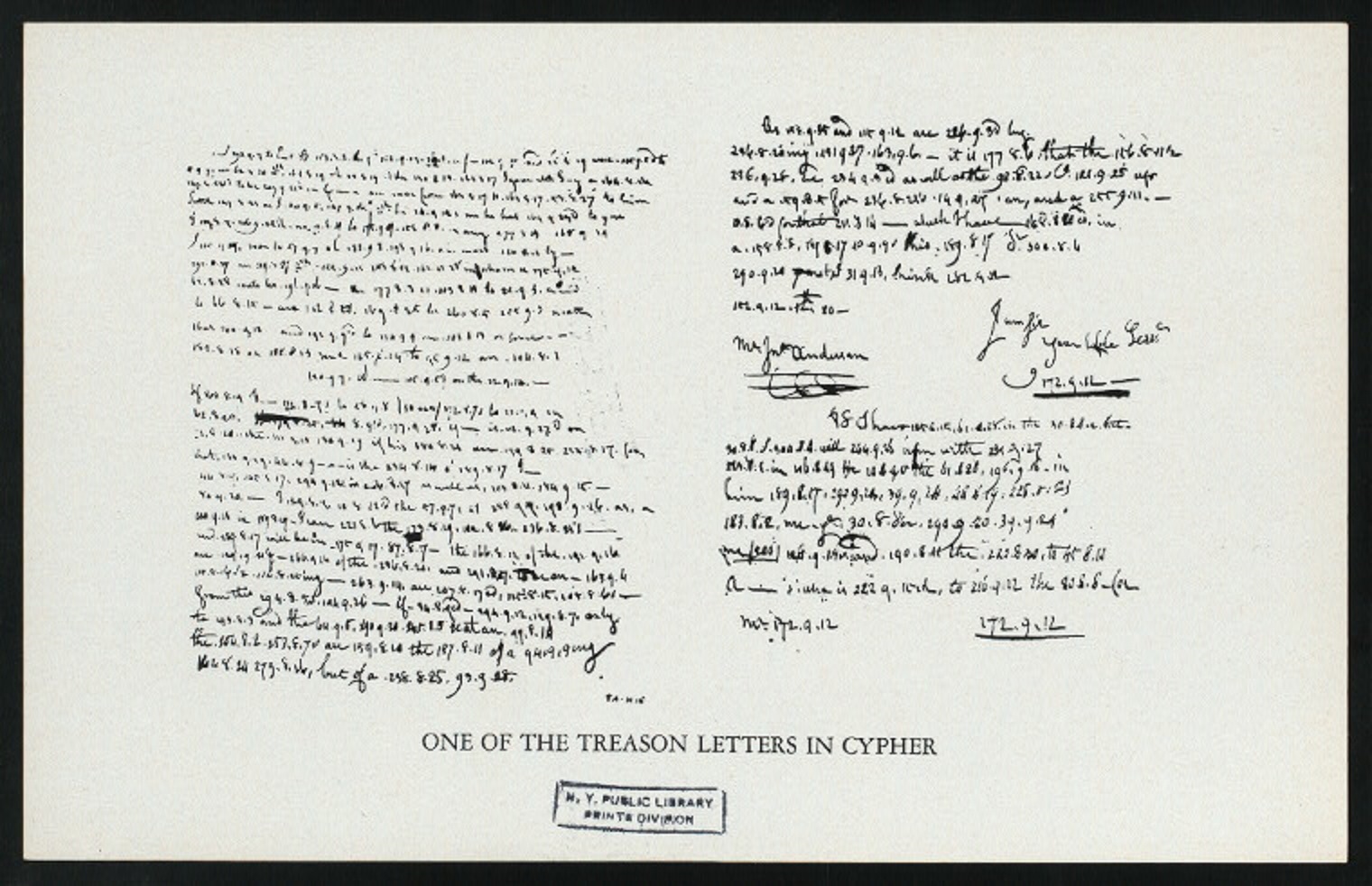Reproduction of one of Benedict Arnold’s coded communications with the British while he was negotiating what eventually became a failed attempt to surrender the fort at West Point in 1780. Lines of text written by his wife, Peggy Shippen Arnold, are interspersed with coded text (originally written in invisible ink) written by Arnold. From the digital collection of the New York Public Library.
Poetry is written with tears, fiction with blood, and history with invisible ink.” — Carlos Ruiz Zafon
Invisible ink, also known as security ink or sympathetic ink, is a substance used for writing, which is invisible either on application or soon thereafter, and can later be made visible by some means, such as heat, chemicals or ultraviolet light. The history of invisible ink is mainly the history of war, for it is during such times that intrigue, espionage, and spying is at its most vital and necessary.
Ancient Times
One of the earliest writers to mention an invisible ink is Aeneas Tacticus, in the 4th century BC. He mentions it in discussing how to survive under siege but does not indicate the type of ink to be used. This was part of his list of the 20 different methods of secret communications. Philo of Byzantium may be the first writer known to describe an invisible ink using a reagent around 217–218 BC, with oak galls and vitriol. These ingredients were used to make oak gall ink.
In the first century AD, Pliny the Elder mentioned using the milk of the tithymalus plant as an invisible ink. Pliny the Elder and the Roman poet Ovid gave advice on the use of plant juices and milk to write secret messages. Lemons were also used as organic inks by Arabs around 600 AD, and during the 16th century in Europe.
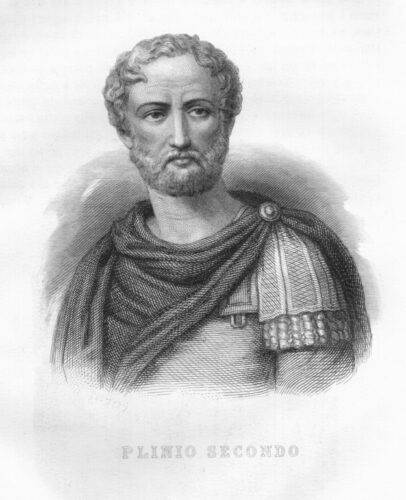
Renaissance
Invisible ink continued to be used during the Renaissance; statesmen used it in their letters, and Ovid references the practice in his Art of Love. Giovanni Battista della Porta is credited with the first recipe for a sympathetic ink, derived from alum and vinegar, as well as the first book Magia Naturalis with instructions on secret writing and invisible ink, (1558, 1589).
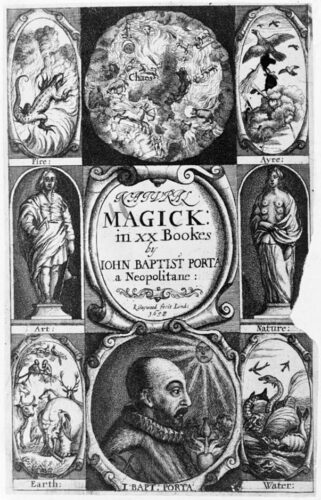
American Revolution
George Washington financed a secret laboratory for the production of invisible ink in Fishkill, New York. This lab was managed by James Jay, the brother of Founding Father John Jay. A formula similar to oak gall ink was created by James Jay. The invisible ink was used by many of Washington’s spies, including the Culper Spy Ring of Major Benjamin Tallmadge and the Dayton Spy Ring of Col. Elias Dayton of Elizabeth, New Jersey during the American Revolution.
American operatives stationed overseas used invisible ink to write their intelligence reports. George Washington was of the opinion that this method would not only make his messages less susceptible to interception, but also alleviate the concerns of those tasked with transporting them. Even with the use of invisible ink for their messages, it’s believed that the British were able to intercept and decode more than half of America’s confidential letters during the war.
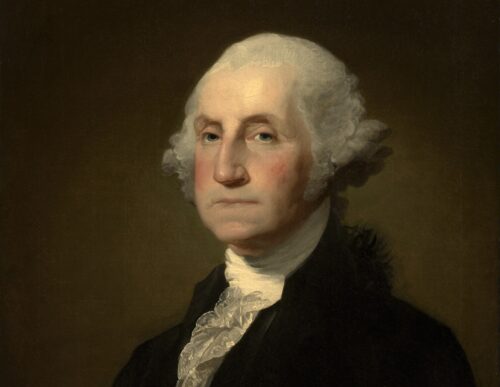
World Wars
During World War I and World War II, the Germans improved on the method of invisible ink crossings, During Worlds War I, British chemists discovered that German spies were using Argyrol, a commercially available silver salt of a protein mixture. This substance, sold as a light brown powder, is water-soluble. This marked a significant shift. Previously, the British and French had identified reagents for simpler secret inks, such as iron chloride revealed by potassium ferrocyanide hidden in soap, and lead acetate in perfume, which they had detected during searches of suspects at border.
In the early years of World War I, simple lemon juice had been used as invisible ink. In 1915, a group of German agents became known as the “lemon juice spies,” due to their use of lemon juice as invisible ink to send information back to their homeland before they were captured in Britain by British counterintelligence. One of the lemons that played a role in the trial of a convicted “lemon juice spy”, Carl Muller, can still be seen in the British National Archives. However, it has now shrunk to the size of a walnut and turned black.
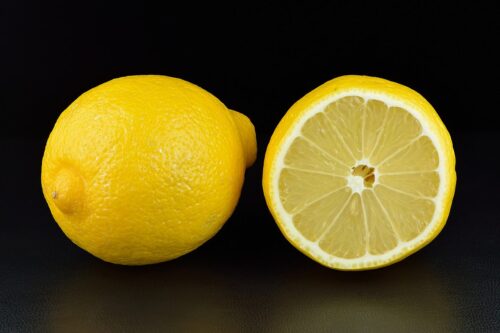
In World War II, neutral or acidic solutions of phenolphthalein, a chemical compound extracted from pills for constipation, were used as invisible ink. It is colorless but turns pink when exposed to alkali such as ammonia and bicarbonate soda. German scientists also started to devise techniques that wouldn’t react to a single reagent. They began to create extremely diluted solutions, with concentrations varying from 1:50,000 to 1:500,000 continuing research begun in World War I.. The secret ink in these diluted solutions was not only difficult to detect, but also challenging to analyze chemically, as the metal molecule wouldn’t show up with standard developers.
Science of Invisible Ink
Starting with the Roman general Pliny the Elder using milk from the thithymallus plant, to modern inks which are only visible under UV light, the science of invisible ink has grown quite complex. Some of the oldest CIA documents contain recipes for special inks.
Invisible ink can be applied to a writing surface with a specialty purpose stylus, stamp, fountain pen, toothpick, calligraphy pen, Cotton swab, or even a finger dipped in the liquid. Once dry, the written surface looks as if it were blank, with a similar texture and reflectivity as the surrounding surface. The ink can be later made visible by different methods according to the type of invisible ink used.
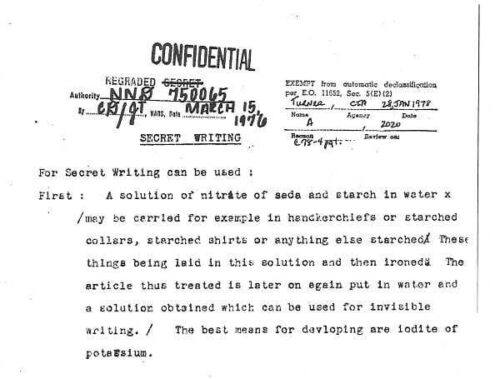
The CIA has recently made public a number of documents dating back to 1917 that contain instructions for creating invisible ink. The CIA has stated that the recent advancements in technology have enabled the disclosure of these documents. The original documents are housed in the National Archives. Copies are now available on the CIA’s website.
One of the methods involves using a dilute solution of starch, colored slightly with a bit of iodine tincture. The resulting blue writing will disappear after a short time. Another formula for revealing hidden writing includes a mixture of 5 grams of potassium iodate, 100 grams of water, and an addition of 2 grams of tartaric acid. However, caution is advised when applying a hot iron to the paper surface to avoid any damage.
Another method involves immersing a handkerchief, or any other item containing starch, in a mixture of nitrate, soda, and starch. This process creates a transportable invisible ink solution. Submerging the treated handkerchief in water would yield a solution that could be utilized to pen covert messages, according to the documents.
During the Cold War, a significant breakthrough in covert writing technology was the transition from liquid invisible inks to dry systems. The Soviet KGB was among the first international intelligence agencies to adopt a dry technique. As the Cold War drew to a close, both sides were employing new methods that involved minuscule, nearly imperceptible amounts of chemicals in their clandestine written communications.
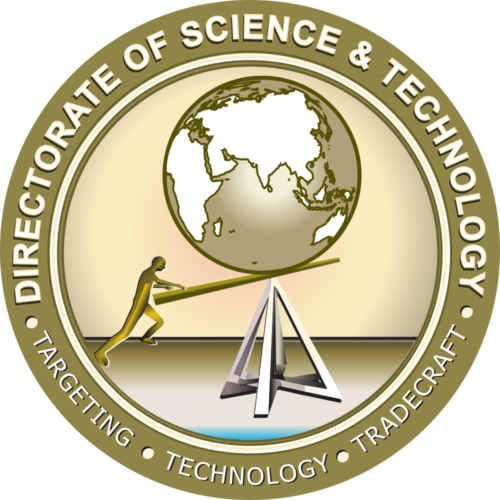
How to Make Invisible Ink
Here are some simple ways to make and reveal invisible ink:
Heat-Activated Invisible Inks: You can reveal the message by ironing the paper, setting it on a radiator, placing it in an oven (set to lower than 450 degrees F), or holding it up to a hot light bulb. To write the message you can use:
Any acidic fruit juice (e.g., lemon, apple, or orange juice)
Onion juiceBaking soda (sodium bicarbonate)
Vinegar
White wine
Diluted cola
Diluted honey
Milk
Soapy water
Sucrose (table sugar) solution
Urine
Inks Developed by Chemical Reactions: These inks are sneakier because you have to know how to reveal them. Most of them work using pH indicators, so when in doubt, paint or spray a suspected message with a base (such as sodium carbonate solution) or an acid (such as lemon juice). Some of these inks will reveal their message when heated (e.g., vinegar). Examples of such inks include:
Phenolphthalein (pH indicator), developed by ammonia fumes or sodium carbonate (or another base)
Thymolphthalein, developed by ammonia fumes or sodium carbonate (or another base)Vinegar or diluted acetic acid, developed by red cabbage water
Ammonia, developed by red cabbage water
Sodium bicarbonate (baking soda), developed by grape juice
Sodium chloride (table salt), developed by silver nitrate
Copper sulfate, developed by sodium iodide, sodium carbonate, potassium ferricyanide, or ammonium hydroxide
Lead (II) nitrate, developed by sodium iodideIron sulfate, developed by sodium carbonate, sodium sulfide, or potassium ferricyanide
Starch, developed by iodine solution which turns starch dark blue and the paper light blue
Inks visible under ultraviolet light: Invisible inks that are visible under ultraviolet light work in two primary ways. Some inks, particularly those found in organic substances and body fluids, emit a faint glow, or fluorescence, when exposed to an ultraviolet lamp. Conversely, other inks absorb ultraviolet light without fluorescing. When these inks are used on fluorescent paper, the inked areas emit less fluorescence than the surrounding paper area under an ultraviolet lamp. This is particularly true for inks with a yellow tint. Some UV-visible inks can be detected on a photocopy due to the strong ultraviolet component in the light from the photocopier scanning head. Examples of substances that can be revealed by ultraviolet light include:
- Laundry detergents containing optical brighteners
- Soap
- Body fluids
- Sunscreen
- Lemon juice
In conclusion, invisible ink has been a fascinating tool throughout history, used for everything from playful secret messages to critical espionage during times of war. The magic of invisible ink lies in its ability to hide in plain sight, a testament to human ingenuity,
Resources
Central Intelligence Agency
CIA.gov
International Spy Museum
SpyMuseum.org
*The views and opinions expressed on this website are solely those of the original authors and contributors. These views and opinions do not necessarily represent those of Spotter Up Magazine, the administrative staff, and/or any/all contributors to this site.
